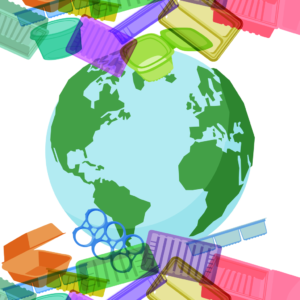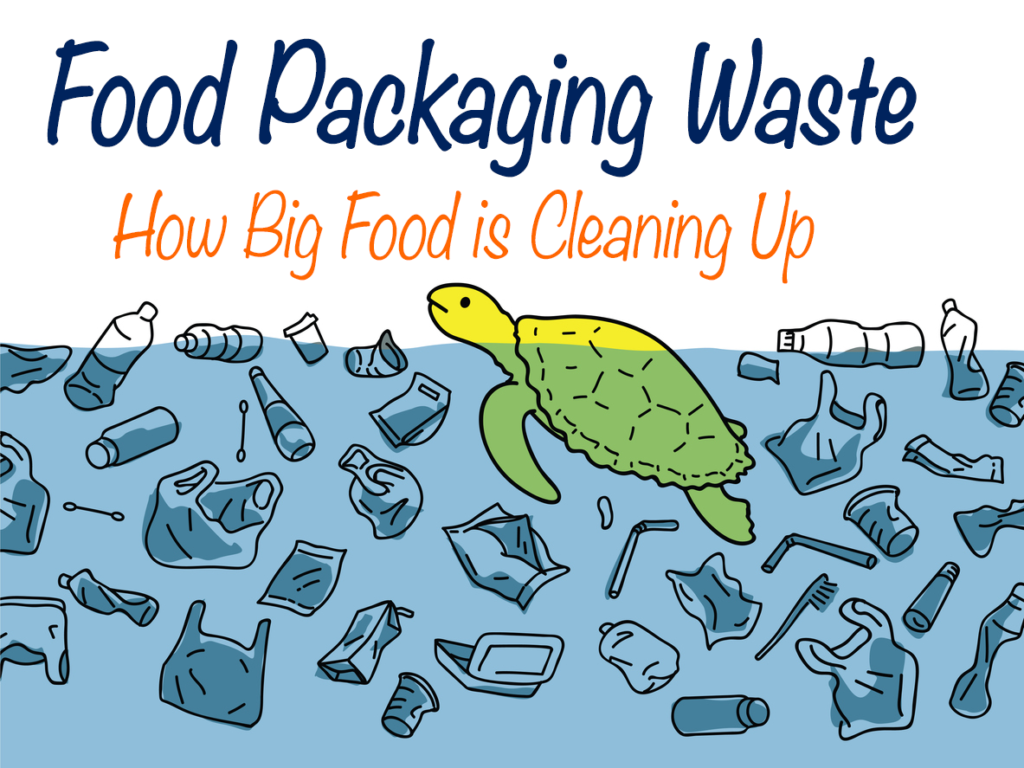Food packaging waste continues to pose challenges for manufacturers. Press coverage points to the environmental impacts of ocean wastelands of plastic trash, and governments around the world are implementing plastic bans. However, plastic remains the most practical material for food packaging.
The world’s ubiquitous infatuation with plastic food packaging

During WWII, the military discovered how versatile plastic could be. Later, plastic film revolutionized food storage in kitchens. In the 1960s Tupperware® containers transformed home food storage, laying a foundation for food packaging’s plastic future.
Fast forward to 2019 and consumers “expect” to buy salads in bags and clear clamshells, meat wrapped in plastic film, and sports drinks in single-use plastic bottles.
So, how do manufacturers switch from packaging that keeps food safe and fresh, is economical to produce and ship, and meets consumers’ expectations?
Innovators continue to search for plastic packaging alternatives. That includes devloping environmentally friendly biodegradable and biocomposite materials.
Additionally, for a while, food companies found a middle ground for the plastics problem. They were able to use recycled plastic (rPET) to create new packaging.
However, recycled material supplies (a favorite of beverage manufacturers) have dwindled due to China’s recent cutback in buying plastic waste and processing it for reuse.
Can we get the food packaging genie back in the bottle?

When juice pouches hit the market in the 1990s, consumers fell in love with the easy-to-store-and-use stand-up plastic pouches. For manufacturers, the flexible plastic containers were cheaper to make and transport.
The universal appeal continues, as more companies test the pouches (with flip-top lids) for foods like yogurt, honey, and barbecue sauce.
Unfortunately, the fused foil-and-plastic packaging is “…kryptonite to recycling companies, which can’t separate their heterogeneous layers.”
Big food companies are “showing” progress

Activist organizations continue to form to create packaging-waste awareness. They build partnerships with packaging companies to help divert waste from oceans and landfills.
The World Wildlife Fund (WWF) is taking a different approach to reducing food packaging waste. They’re teaming up with big-name food companies that want to take action toward the packaging waste problem. The companies agree to share their plastic-reduction data and progress—publicly.
By joining WWF’s ReSource: Plastic organization, companies such as Coca-Cola, Keurig, Dr Pepper, McDonald’s, Procter & Gamble, Starbucks, and Tetra Pak provide “…the first real understanding of whether industry-wide progress is being made on tackling plastic pollution.”
Finding the packaging sweet spot
R&D teams continue to explore packaging materials that offer the convenience of plastic packaging without environmental impacts.
Additionally, more big food companies are willing to measure their plastic-reduction efforts. Their data will create a better understanding of packaging management.
Ultimately, the food industry has the potential to lead the way in reducing packaging waste — in the U.S. and globally.
In your opinion, what are the greatest packaging waste challenges for food industry businesses? Let us know in the comments. Please share this post on LinkedIn!
Ingredient Exchange helps food industry businesses recycle problem food products that would otherwise go to the landfill. If you have off-spec or downgraded inventory, we’ll find a market for your product and turn your problem ingredients into cash.
Give us a call: 314-872-8850



